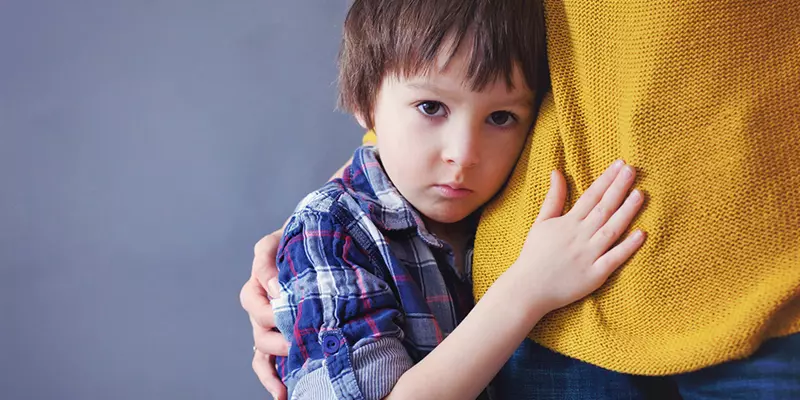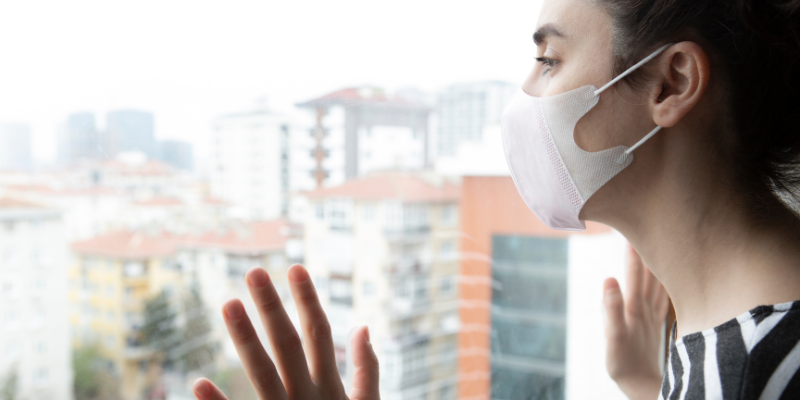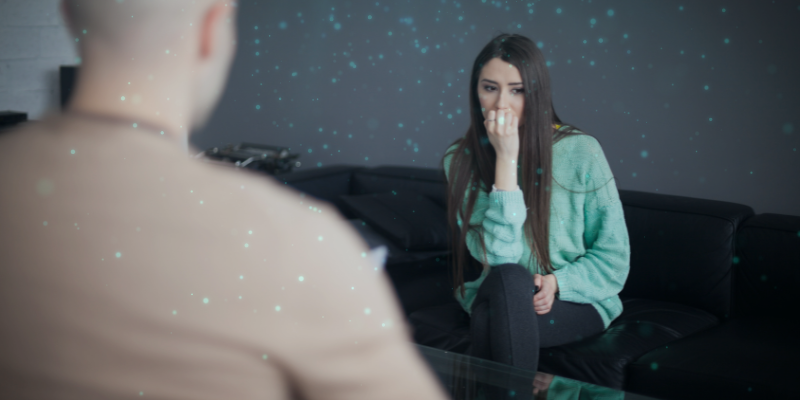
Some anxiety is a good thing. It’s what makes your child do their homework on time, look both ways when crossing the street, and do their chores. But when kids have too much anxiety, it can make them suffer.
Six-year-old Sam was terrified of dogs. Seeing one, even a small dog, would make him run away or cry out in fear. Sam had never been bitten or attacked by a dog, so there was no reason for his irrational anxiety about dogs. One day, when Sam was walking hand-in-hand with his mom, a dog came toward them. Sam panicked, dropped his mom’s hand and ran across the street to avoid the dog and narrowly missed being run over by a car. That’s when his mom took Sam for an evaluation.
A fear of dogs wasn’t Sam’s only issue. He was intensely shy and would become very nervous whenever anyone would fight at school or at home. He also bit his fingernails, complained of frequent stomachaches, and had trouble sleeping most nights.
Brain imaging studies using SPECT technology show that children with anxiety tend to have heightened activity in certain areas of the brain, including the basal ganglia, which is involved in setting a person’s anxiety level. Sam’s brain scan showed this same pattern.
Fortunately, there are many things you can do to change the brain to help children—like Sam—overcome anxiety.
5 Natural Ways to Help Kids Overcome Generalized Anxiety Disorder
1. ANT Therapy
Anxious kids tend to have a lot of ANTs (automatic negative thoughts). Their anxious thoughts may prevent them from living a full life. For example, they may avoid socializing with other kids because they think they will be unfairly judged or laughed at. They may not sign up for the school field trip because they think the school bus will get into a terrible accident along the way. Teaching your children to question their ANTs can help. Here’s how this simple technique worked for Sam, as he learned ways to talk back to his ANTs.
ANT: “That dog is going to attack me and bite me all over.”
Talk back to the ANT: “The dog is in its yard behind a fence, and it isn’t big enough to jump over the fence.”
Talk back to the ANT: “The dog is on a leash, and the owner is a big guy who can hold the leash tight if he needs to.”
Talk back to the ANT: “The dog is not growling at me and isn’t even looking at me.”
2. Balloon Breathing
One of the simplest forms of relaxation that you can teach an anxious child is deep breathing. Kids love balloons, so you may want to use a balloon as a visual image to guide them. Whenever your child is feeling anxious, have them take a deep breath into their belly for about 5 seconds, as if they were filling up a balloon. Then have them let the air out of the balloon by exhaling slowly for about 5 seconds. Have them blow up and empty 10 balloons (10 breaths). This immediately gets more oxygen into the body to help calm anxious brains.
3. Food as Medicine
The foods a child eats can either fuel anxiety or soothe it. If you have a kid who skips meals, it can lead to hypoglycemia (low blood sugar), which can trigger feelings of anxiety. It’s important to make sure kids eat small meals that include high-quality protein throughout the day. In addition, problems with gut health are associated with anxiety. To help boost gut health, cut out inflammatory foods like corn, soy, and processed foods from your child’s diet.
4. Nutritional Supplements
Supplements, such as magnesium, GABA, theanine, omega-3 fatty acids, and Relora, are frequently used to help calm anxiety. Check with an integrative physician who does brain health nutrition coaching for doses that are appropriate for children.
5. Biofeedback
For some children who suffer from anxiety due to emotional trauma, a biofeedback technique called EMDR (eye movement desensitization and reprocessing) can be effective. This non-invasive therapy involves holding specific memories in mind while a therapist performs hand movements to reduce the emotional response associated with the memory. This therapy helped Sam overcome his fear of dogs. For kids, it’s important to find a therapist who is trained and skilled in working with children and adolescents.
Amen Clinics has helped thousands of children and adolescents—including Sam—overcome anxiety, panic attacks, and emotional trauma. We use brain SPECT imaging to help identify which type of anxiety they have and to help find personalized solutions as part of a brain-body approach to healing.
If your child’s anxiety is affecting their daily life, speak with a specialist today at 888-288-9834 or schedule a visit online.





I am 60 years old black man who unknowingly been living in a black mold infected apartment for over five years… About five years ago I began experiencing mental psychosis causing severe anxiety and paranoia… I became very I’ll in 2015 and had stay in the hospital for three days taking all sorts of medical test to no avail… I had really bad light sensitivity and loss of balance… I requested my health department to check out my apartment for bad air and water quality but they never found the black toxic mold in my HVAC… Recently I did a mold test kit from Lowe’s and found lots of mold … I believe my mental psychosis episode is a direct result of black Toxic Mold..
Comment by John Angus Jacobs — August 7, 2019 @ 3:55 AM
Nt just for kids …
Comment by Maria Lopez Howell — August 7, 2019 @ 4:14 AM
Your Ideas Dr Dan Amen are well taken.
Comment by David Mann — August 7, 2019 @ 4:39 AM
What about help for adults?
Comment by TiffanyYoungCollins — August 7, 2019 @ 5:25 AM
Neuropathy any suggestions on how to treat someone with this condition.
Comment by Arnold — August 7, 2019 @ 10:40 AM
My question relates to both of the previous questions. 1) what about adults? 2) My husband & I both started experiencing severe anxiety (me w/panic attacks) about the same time. Can there be a common denominator (ie: mold or toxin)??
Comment by Debbie — August 7, 2019 @ 11:12 AM
Hi John,
I’m not associated with the AMEN clinic, but treat individuals with mold exposure. Your experience is likely caused by the mold, so my first advice is to move or get the mold out of your HVAC system ASAP. I find several useful supplements help kill mold you have inhaled. One is from Thorne, SF722, an extract of caster bean. I recommend starting with 1 or 2 a day then increasing to 6 -8/day over a week or so. You may need to use it for 6 – 8 weeks, or more.
If you have inhaled a considerable amount of mold spores, the ‘kill off’ of the mold will leave you feeling sick, if you take too much SF722 at first, so titrate up to a level you are comfortable with. I recommend you talk to a functional medicine practitioner to help repair your immune system. Recovering from mold exposure can take months, so be patient. Good luck!
Comment by Dr Parks — August 9, 2019 @ 8:30 AM